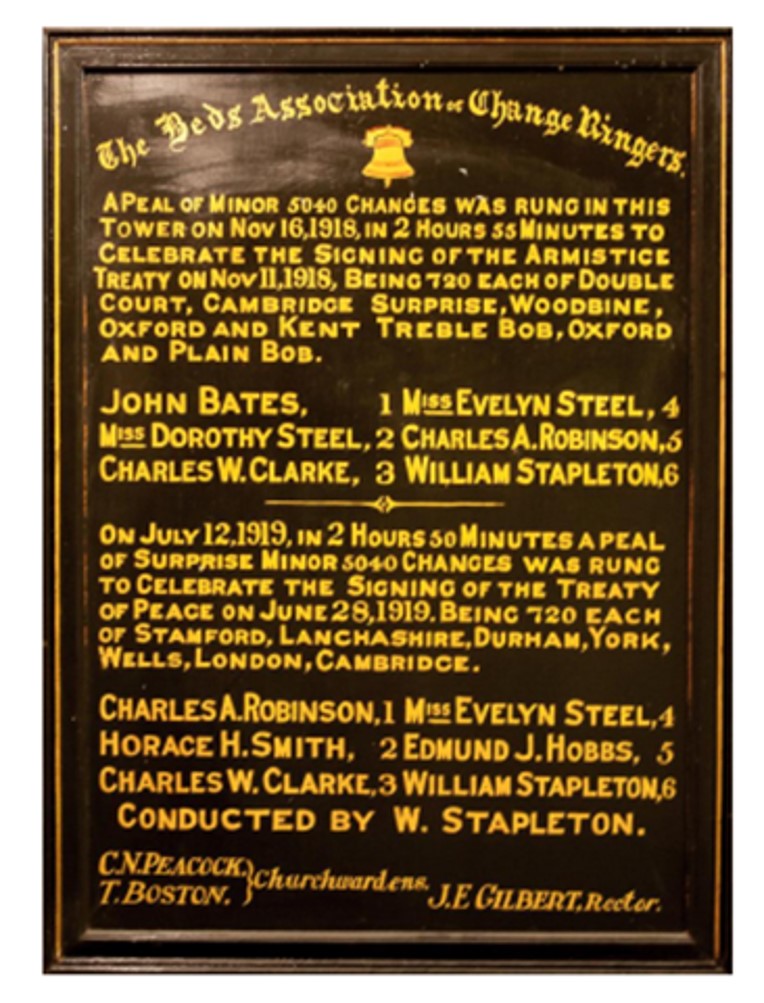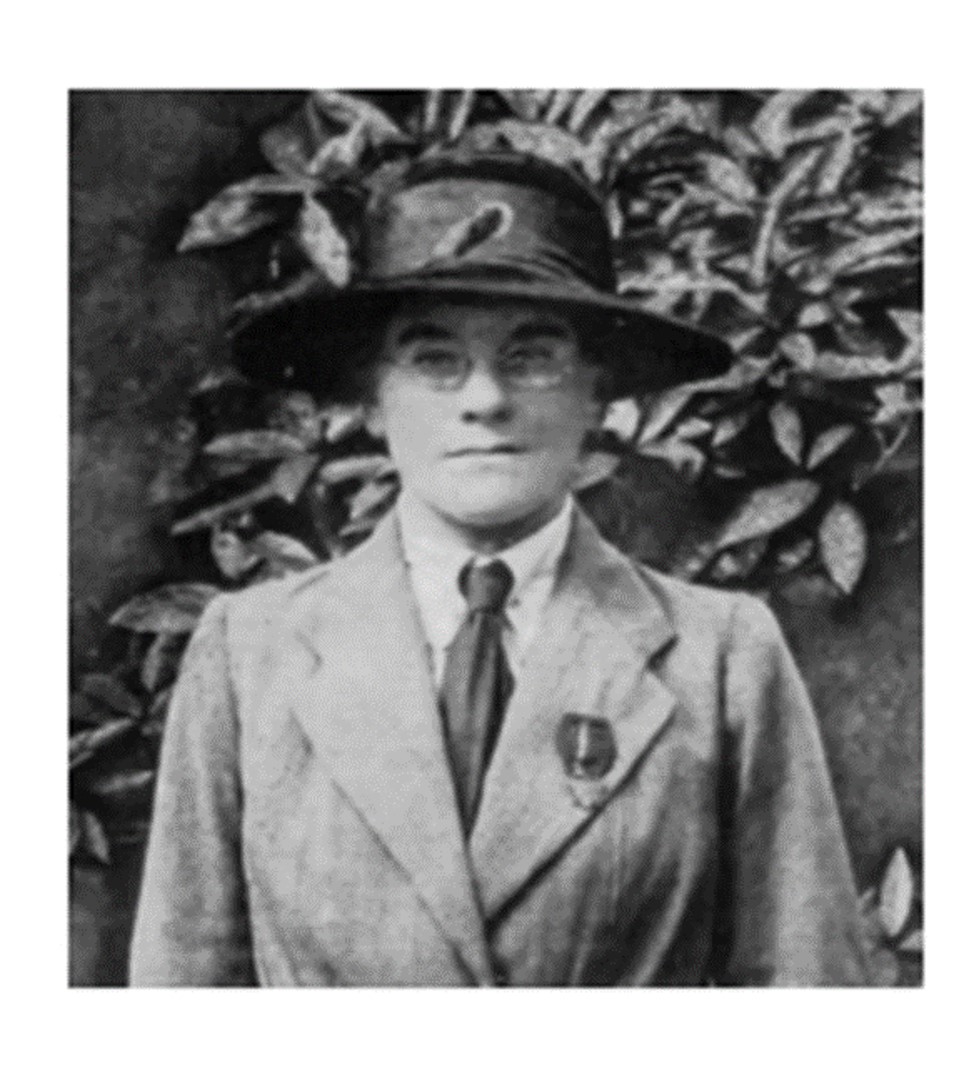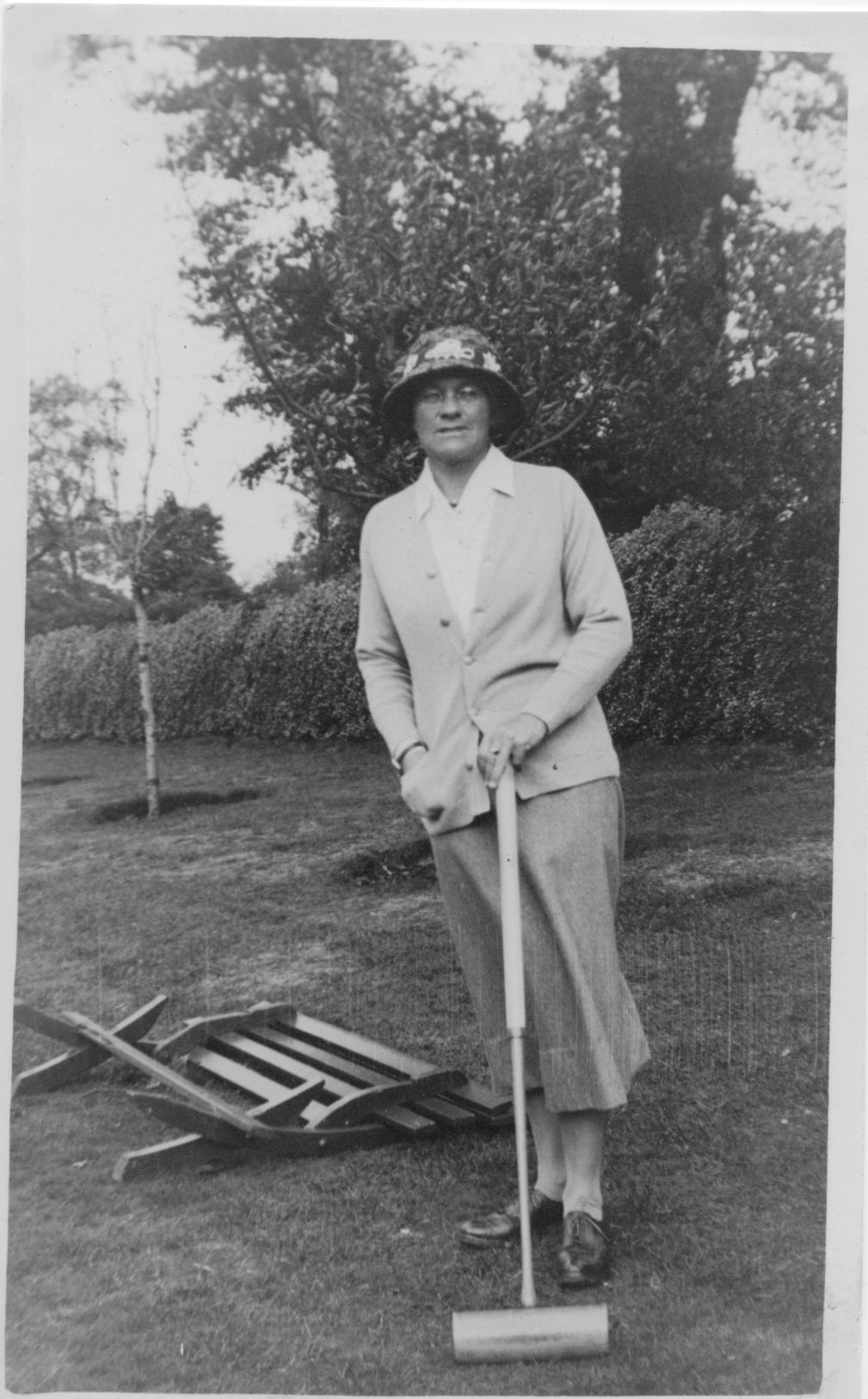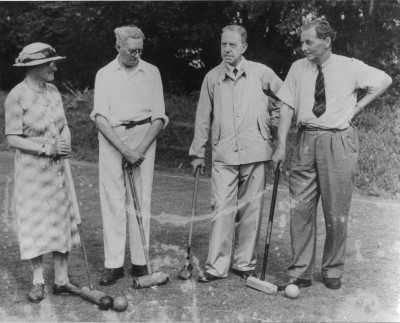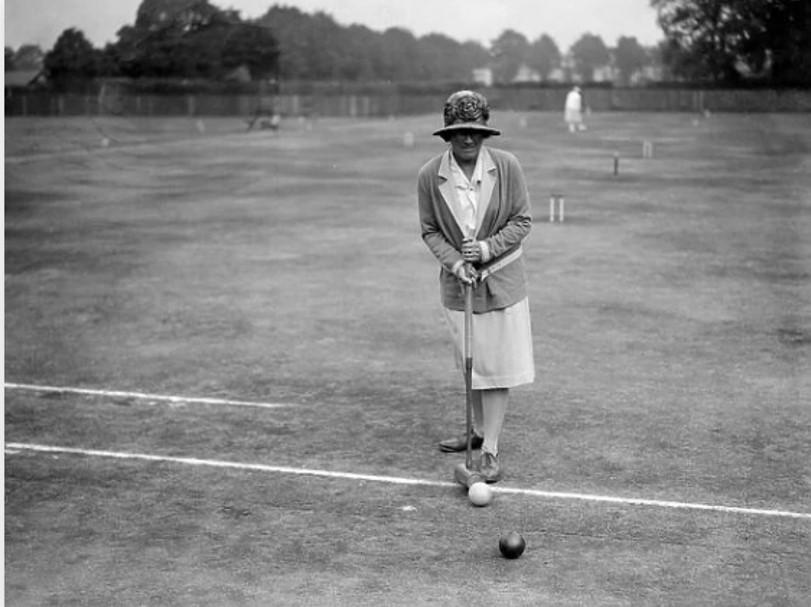
Celebrating Women in History Month with great croquet players from the past – Dorothy Dyne Steel
Dorothy Dyne Steel was probably the most successful croquet player in the World from 1919 to 1937.
D.D, as she was frequently called, was born on 21st April 1884 at Woodsetts, a small village on the border of Nottinghamshire and South Yorkshire. Her father Henry was vicar of Woodsetts which was a community of coal miners, quarrymen and farm labourers. Dorothy was the youngest of five children.
As a young woman Dorothy rode regularly with Viscount Galway’s hounds in north Nottinghamshire, occasionally accompanied by her eldest sister Sybil. Another of her sisters, Evelyn, played golf at the nearby golf club and she won the Yorkshire Ladies Golf Championship five times.
In 1907 Henry Steel, now in his mid-seventies, had retired and he, his wife Elizabeth and their two youngest daughters, Evelyn and Dorothy, moved to Bedford. Their widowed daughter-in-law Ella, and granddaughter also called Ella, lived with them at Bedford. All six of them were still living together when the 1921 census was taken.
Evelyn and Dorothy were bell-ringers at St. Peter’s Church in Bedford. Evelyn took part in the first ever peal by an all-female group in 1912 and both she and Dorothy are recorded on the peal boards in St Peter’s Church. Apparently, Evelyn was an excellent bell-ringer and rang in many peals but Dorothy was a reluctant conscript to ringing peals. Having said that, Dorothy continued to ring with her sister at St. Peter’s until 1937. (Picture 1)
It must have been in Bedford that Dorothy and Evelyn took up croquet with D.D. making her first appearance at the Bedford Club in 1908. D.D. progressed steadily and in 1912 she played in the Ladies Field Cup for the first time, an event she won in 1914. (Picture 2)
The outbreak of World War 1 put a stop to most croquet tournaments but resumption of play in 1919 saw D.D. start to dominate the Women’s game. She won the Ladies Field Cup in 1919 and 1920. By now her prowess led to her being invited to play in the Champion Cup (also known as the Beddow Cup), an invitation event reserved for the top 10 players. She won the event in 1922 and 1923, becoming only the second woman to win this prestigious event – Lily Gower being the first. Also following in Lily Gower’s footsteps, D.D. won the Open Championship in 1925, following it with victories in 1933, 1935 and 1936. (Picture 3)
Meanwhile her success in the Champion Cup led to two further victories in 1931 and 1933 at which point she was presented with the Beddow Cup outright. A new trophy, known as the President’s Cup, replaced the Beddow Cup in 1934 and D.D. was the first winner of that. She won it once more in 1937, which is the last time it has been won by a woman.
In 1925 the MacRobertson Shield test match between England and Australia was held for the first time, at Roehampton. D.D. played for England, winning all three of her singles matches and two out of three of her doubles. The next contest took place in Australia in 1927/8 and, even though England lost, D.D. won 2 out of 3 singles and 2 out of 3 doubles matches. Her third appearance for the England team took place in 1937 when she played in all 5 tests winning 5 singles and 3 doubles matches. (Picture 4)
In 1924 Dorothy was the first winner of the new Open Doubles Championship with her partner Thomas Dickson. She won that event four more times with two other partners.
D.D. made her debut at Sussex County Croquet Club at Southwick in 1925 and won the open singles and hence the Gold Cup, a feat she was to repeat on six further occasions up until 1935, the year in which she accomplished a quadruple peel.
At the outbreak of war in 1939 Dorothy was living at Kings Close, Main Street, Bedford, with Evelyn and their other sister Margaret who was by then widowed. Margaret and Evelyn were in the Women’s Voluntary Service but D.D. appears not to have been.
Once again war stopped croquet tournaments and Dorothy never regained her dominance again. She continued to play but she objected fiercely to the introduction of ‘lifts’ and increasingly arthritis in her wrists prevented her playing. However, she managed many tournaments and she appeared in demonstration matches such as Bristol Croquet Club’s Jubilee in 1947 at which ‘The Sheriff of Bristol attended, as did the Chairman of the CA, and a party of our friends from Cheltenham. (Picture 5)
Dorothy died in January 1965 aged 80. A detailed obituary appeared in the Gazette in April 1965 https://www.croquet.org.uk/?p=members/gazette&GazetteIssueNum=79&pup=y page 7. Her sister Evelyn, who had been her lifelong companion, presented The Croquet Association with a silver rose bowl which it was decided should be awarded to the most improved woman player of the year, and which became known as the Steel Bowl. Unfortunately, this original trophy was stolen in 1993, but a glass bowl is now awarded outright each year in fitting memory of the woman who was probably the best player in the world between the wars.
